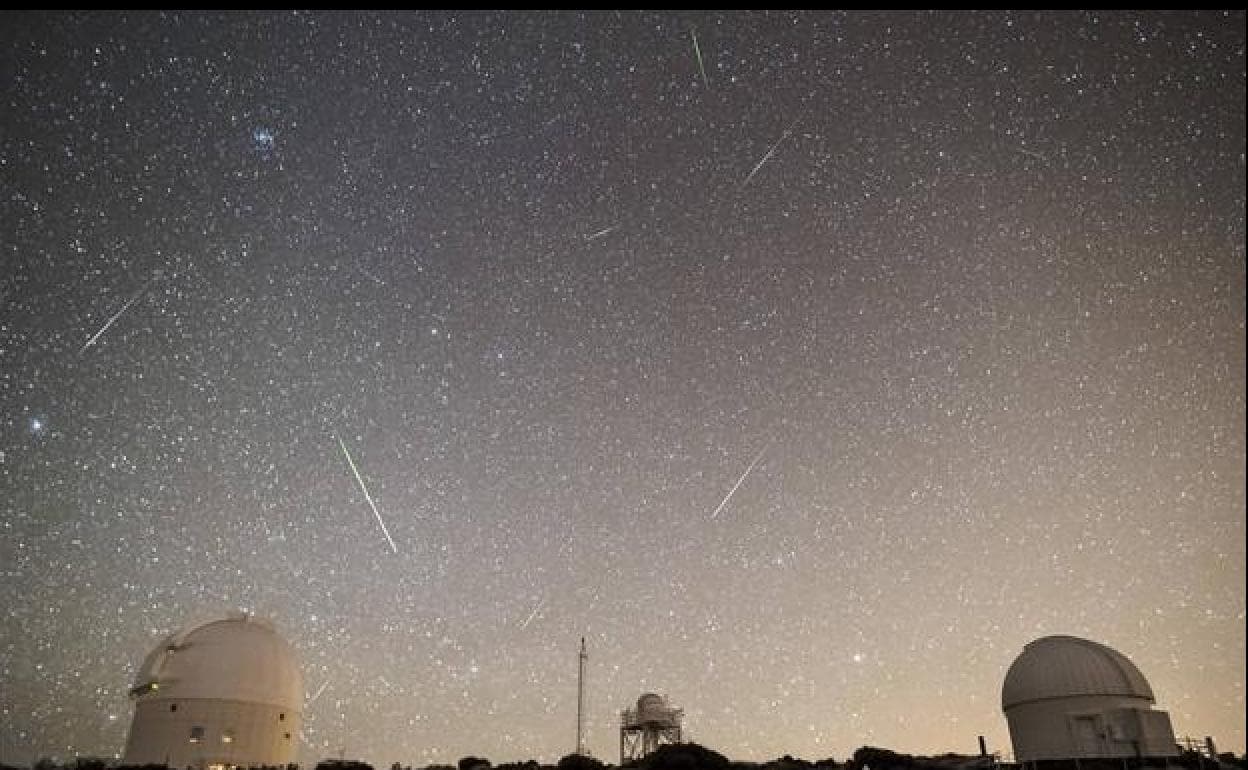

Sections
Highlight

E.M.
MADRID.
Tuesday, 3 January 2023, 13:25
Overnight on the 3rd and 4th January, the popular Quadrantids meteor shower will take place, and it's a good opportunity to ask the “shooting stars” for our New Year wishes to come true.
The phenomenon can be seen from all over Spain, but the further north you are, the better. In the north of the peninsula they will be seen throughout the night, while in the Canary Islands they will be more noticeable well into the early morning”, said Miquel Serra Ricart, administrator of the Teide Observatory at the Instituto de Astrofísica de Canarias (IAC).
The peak of activity is expected around 4.40am, mainland time, when the radiant, the point from which these meteors seem to originate, which in this case is the constellation of the Boyero (close to the Big Dipper), is high enough in the sky.
Therefore, the best time will be just before sunrise. In addition, the almost full moon will already have set and the light from it will not obstruct the view of the weaker meteors.
According to the predictions of the Instituto de Astrofísica de Canarias, a meteor will be seen every four minutes, some of them very bright. To observe them, the best thing is to lie on the ground looking up at the sky in a place without light pollution and with clear horizons. Different types of optical equipment, such as binoculars or telescopes, are not recommended because they limit the field of vision.
If light pollution does not allow it, another option is to follow it online through the IAC channel sky-live.tv, which will broadcast the phenomenon live from the Teide Observatory (Tenerife).
Normally, meteor showers are named by their radiant (Perseids by the constellation Perseus, Geminids by Gemini...). However, the Quadrantids are named after the missing constellation Quadrans Muralis, ‘discovered’ by the astronomer Joseph Lalande in 1795, and which, although it is no longer recognised by scientists, continues to give its name to this meteor shower. Along with the Geminids and the Perseids, the Quadrantids are part of the group of the most intense meteor showers of the year. Its activity is usually close to 100 meteors per hour, a figure that remains little changed year after year.
The so-called "shooting stars" are actually small dust particles of different sizes from comets. These celestial bodies are made up of rocks and ice, so when they approach the heat of a star on their trajectory, part of their ice "melts" and the stream of particles (meteoroids), about the size of a grain of sand result, floating for years in space. When the Earth encounters these dust clouds and the particles enter the atmosphere at great speed they disintegrate, creating the well-known luminous streaks that are scientifically called meteors and, popularly, shooting stars.
This is true for most meteor showers, but not for the Quadrantids and Geminids, since there is no comet that coincides with the path of the "debris" cloud. The progenitors of these phenomena are asteroids, rocky celestial bodies smaller than a planet and larger than a meteoroid: 3200 Phaeton in the case of the Geminids and 2003 EH for the Quadrantids.
Publicidad
Publicidad
Publicidad
Publicidad
Esta funcionalidad es exclusiva para registrados.
Reporta un error en esta noticia

Debido a un error no hemos podido dar de alta tu suscripción.
Por favor, ponte en contacto con Atención al Cliente.

¡Bienvenido a SURINENGLISH!

Tu suscripción con Google se ha realizado correctamente, pero ya tenías otra suscripción activa en SURINENGLISH.
Déjanos tus datos y nos pondremos en contacto contigo para analizar tu caso

¡Tu suscripción con Google se ha realizado correctamente!
La compra se ha asociado al siguiente email
Comentar es una ventaja exclusiva para registrados
¿Ya eres registrado?
Inicia sesiónNecesitas ser suscriptor para poder votar.